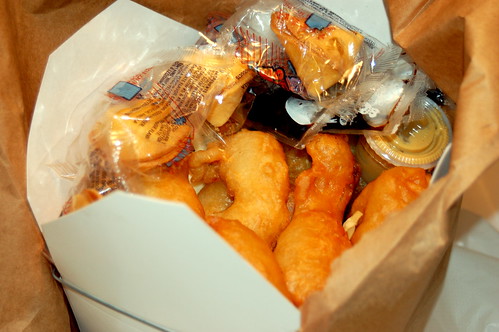 |
| Photo Credit: yorkd |
"If you showed one of these iconic white pails to people in China, they might scratch their heads. The little boxes were patented on November 13, 1894 in Chicago by the not-so-Chinese inventor Frederick Weeks Wilcox (who wanted to improve the wooden oyster pails commonly used to transport raw mollusks from fish markets). They’re distinctly American—as is the takeout packed inside them.
Chinese restaurants first started popping up in America in the mid-1800s when immigrants—mostly from present-day Guangzhou—flocked to California during the Gold Rush. The eateries spread, and by the 1920s, Chinese restaurants were featuring two menus: one with traditional fare; the other an Americanized version. The latter menu, which featured foods doused in sweet, salty, syrupy sauces, became a cuisine all its own.
For example, the broccoli, tomatoes, carrots, and yellow onions found at American Chinese restaurants aren’t part of traditional Chinese cooking. (Tomatoes and broccoli aren’t even native to China!) That General Tso’s chicken you adore? American. Those fortune cookies? Not just American, but based on Japanese crackers. Chinese food is so ingrained in American culture that there are more Chinese restaurants in the U.S. than there are McDonald’s."What we view as culturally authentic may really not be when distinctiveness is sacrificed in order to gain mass appeal.
No comments:
Post a Comment